Focus on: Roman Drits
Welcome to the 2nd instalment of “Focus On”, a new series of posts where I focus on (pardon the pun) the work of other photographers. In this series I share my thoughts about their art, and interview them so that they can provide context and background.
This time I’m very pleased to focus on Roman Drits, a wonderful photographer whose work I fell in love with on NFT platform HIC, prompting me to delve deeper into his portfolio. I was amazed at the depth and quality of his work, prompting me to write this instalment.
Originally from Riga in Latvia, and now operating from Hamburg, Roman brings an international perspective to his work. Let’s explore his efforts below:
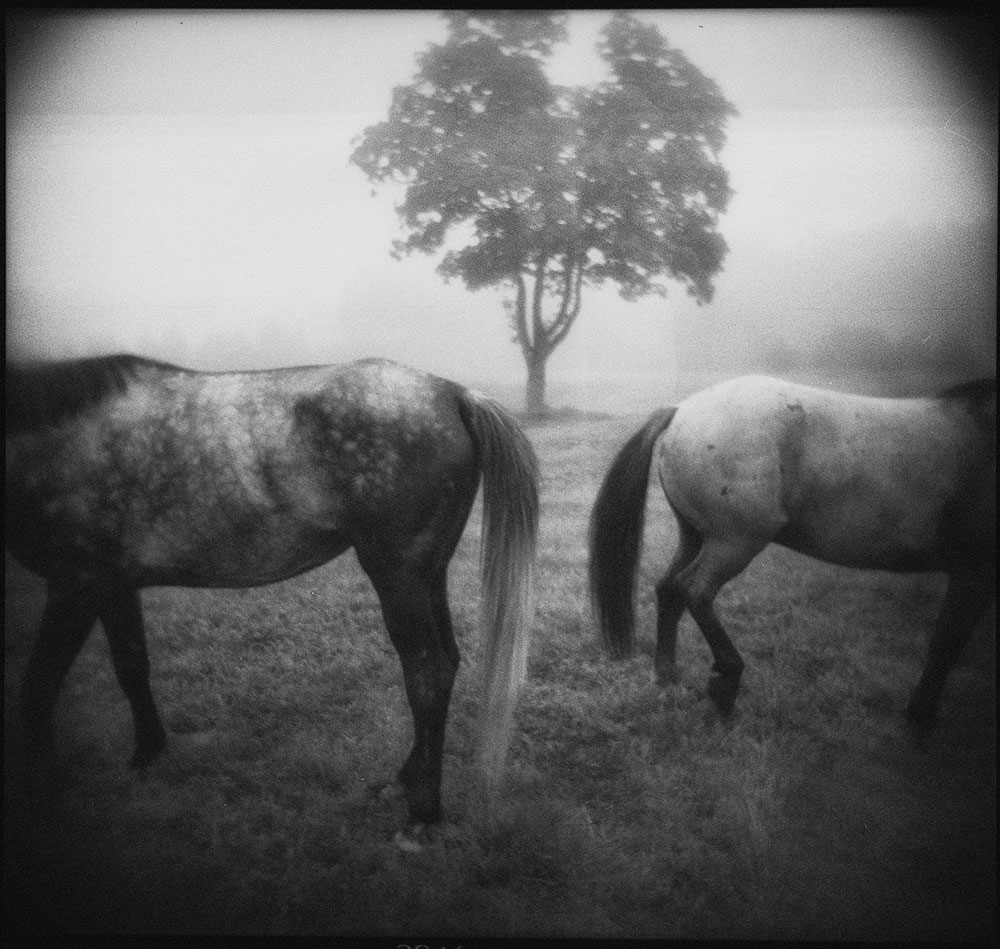
From “Auftakt”
When I first discovered Roman’s work I was beguiled by the low-fi, dreamlike aesthetic of his work, as well as the subject matter, which appears to be deeply personal in nature. Many of his photos capture small, intimate moments which are easily missed or overlooked. They are most often presented in black and white without grand explanations or attempts at forced importance.
Roman’s portfolio is filled with work which captures the in-between moments that happen to each and every one of us, every day, but are very difficult to express, so Roman does it for us, with poetic brilliance. His series “Auftakt” is full of images like that:
A woman flicks her hair in such a way that her face is obscured … A man walks in the snow … A girl stands with some horses …
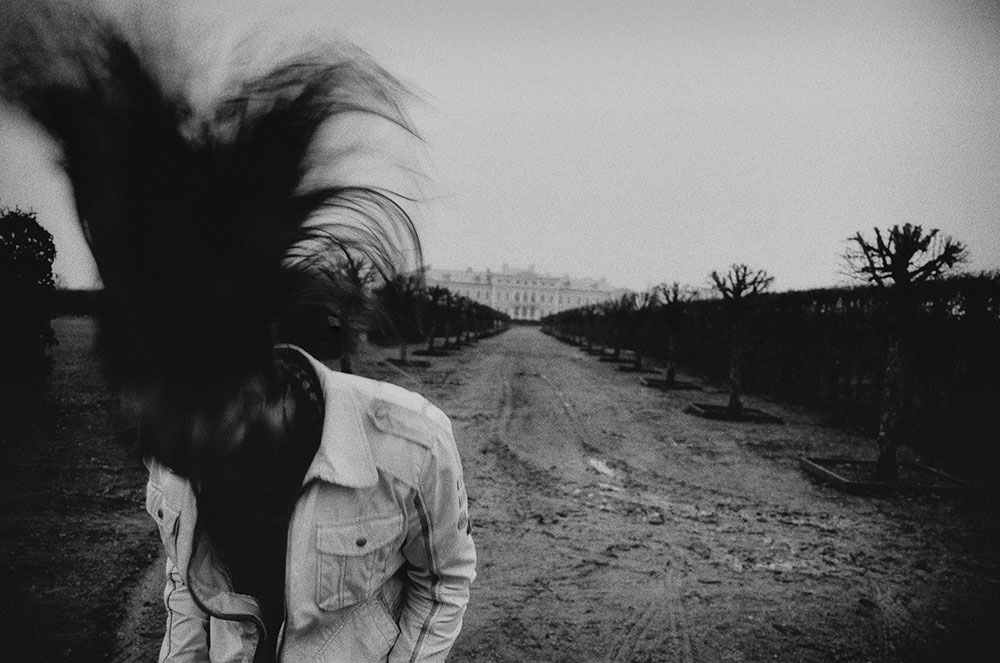
(From “Auftakt”)
The people in Auftakt often seem to exist in a transitional phase. They are between locations or between actions. There is a mystery about what exactly is being depicted. Roman has managed to record the unrecordable with A fuzzy sort of precision. The photos are powerful, evocative and timeless, probably because they literally exist between moments, outside of time.
Although some of Roman’s work is digital (notably his webcam portraits series), much of it is still distinctly low-fi, lending even his digital images an analogue feel. It feels liberating to see this kind of work, because it removes the need to chase after technical perfection for its own sake (something that infects a lot of high end photography), and instead presents us with a different kind of approach, where the technology is used strictly to serve the themes of the work itself. (Not that Roman’s work is technically lacking, far from it in fact. It is just that it’s not concerned with lack of grain, or avoiding blur, or distortion and aberration and so on.)
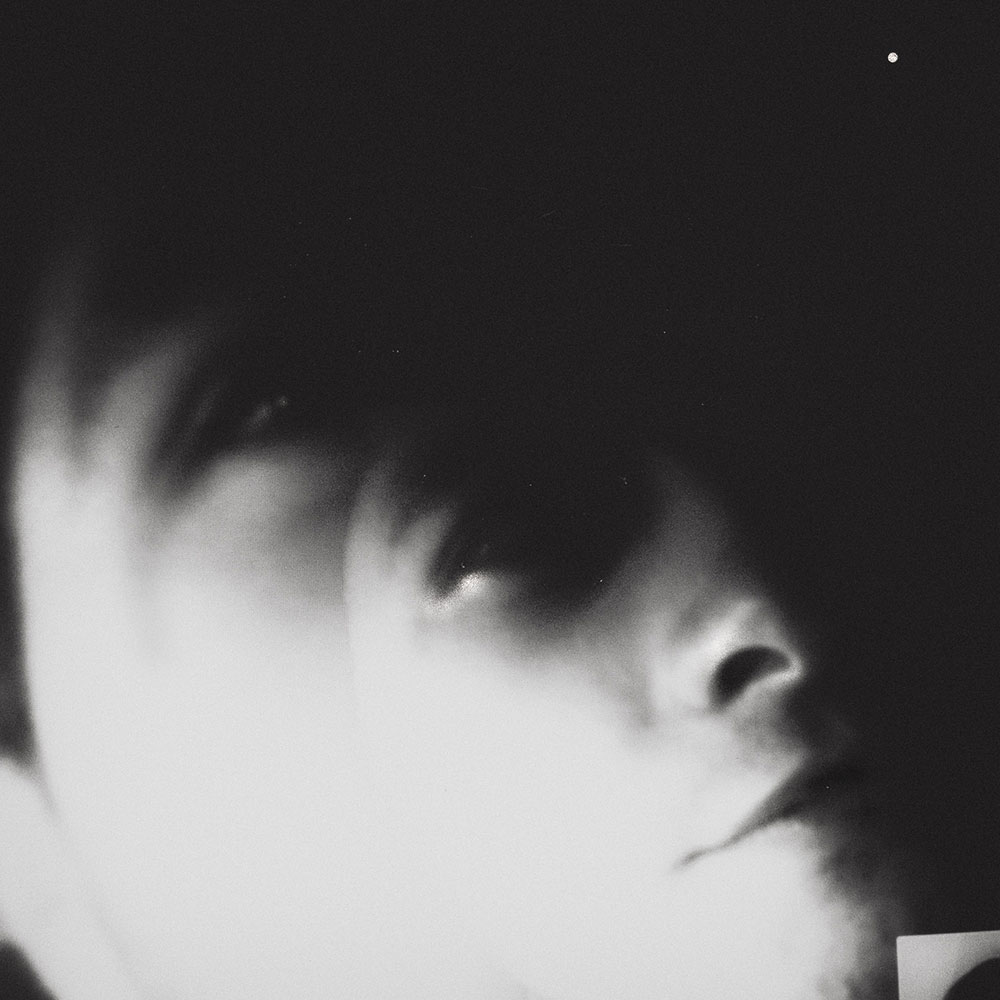
(From “Webcam Portraits”)
As personal and distinctive as Roman’s work is, I can’t help but see some similarities and parallels with several other photographers and styles. For example; his low-fi aesthetic reminds me of the Provoke movement/magazine in Japanese photography, and the Are Bure Boke (Grainy, Blurry, Out of Focus) style that grew out of Provoke. I can see the same sense of freedom and unwillingness to be bound by soulless technical rules.
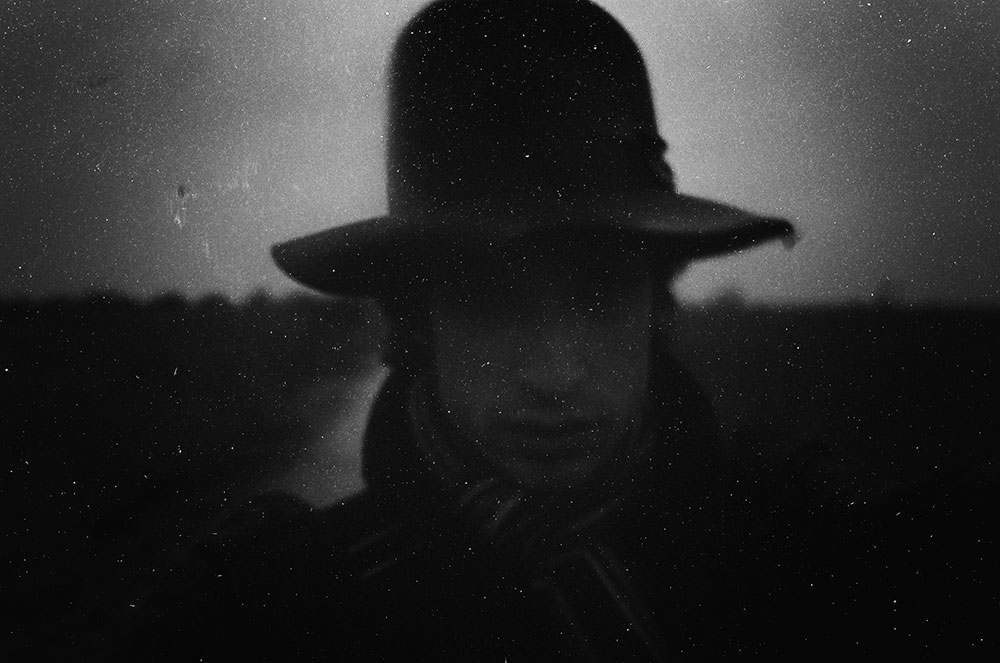
(From “Paradies”)
Another touchstone is “Ravens”, Masahisa Fukase’s seminal photobook, dealing with bleak, metaphorical themes, yet exuding a strong sense of humanity. It is one of the most revered photobooks in the history of modern photography, and it speaks to Roman’s skill that his work evokes similar emotions in me. It feels personal in a similar way, and uses oblique themes and metaphors to express intimate emotions. Personally I would be delighted if Auftakt (or Paradies, or his other work) was available as a monograph. Publishers take note!
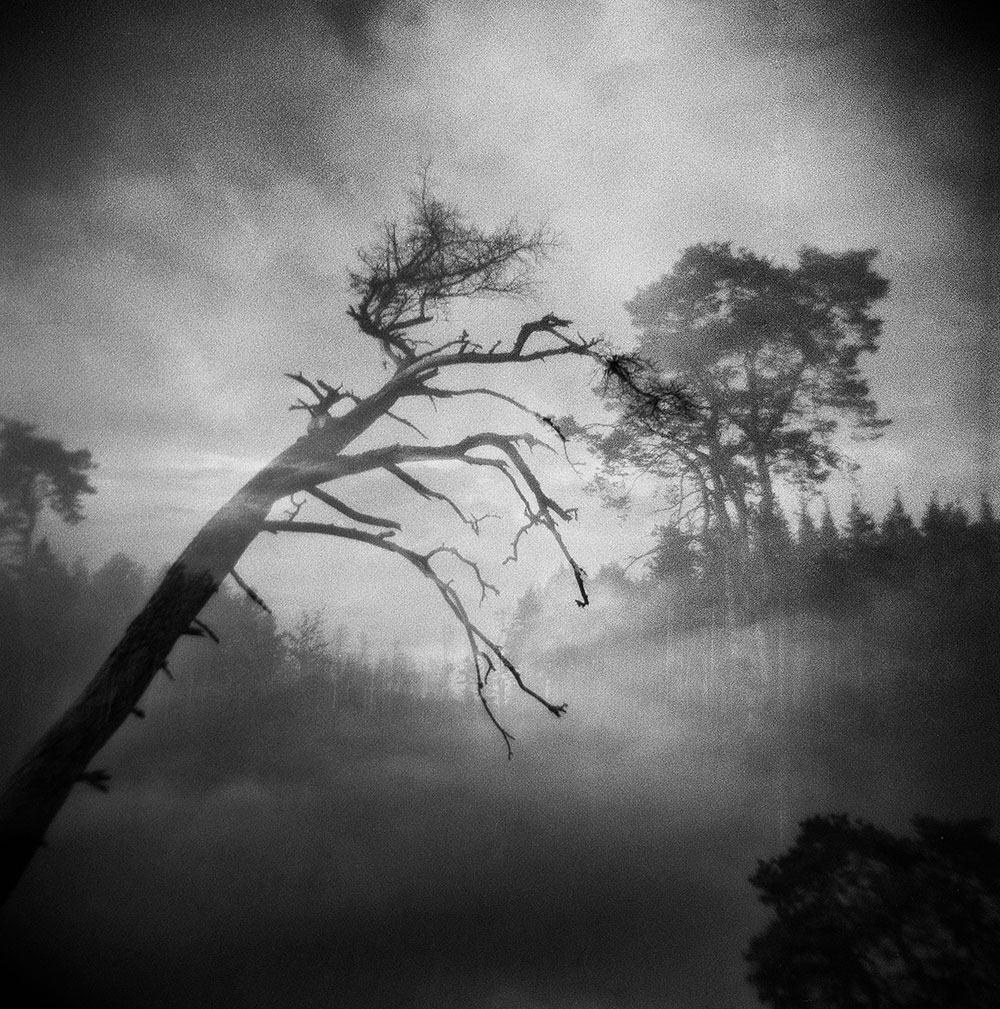
(From “Auftakt”)
And then there are the occasional images in colour; many made for a series called “Aether”. Soft, gentle, dreamlike images, ethereal in quality, using a muted colour palette. I wasn’t able to find out much about this series, which adds to the mystery, but it’s interesting and beautiful, and fits neatly into the general tenor of his other work.
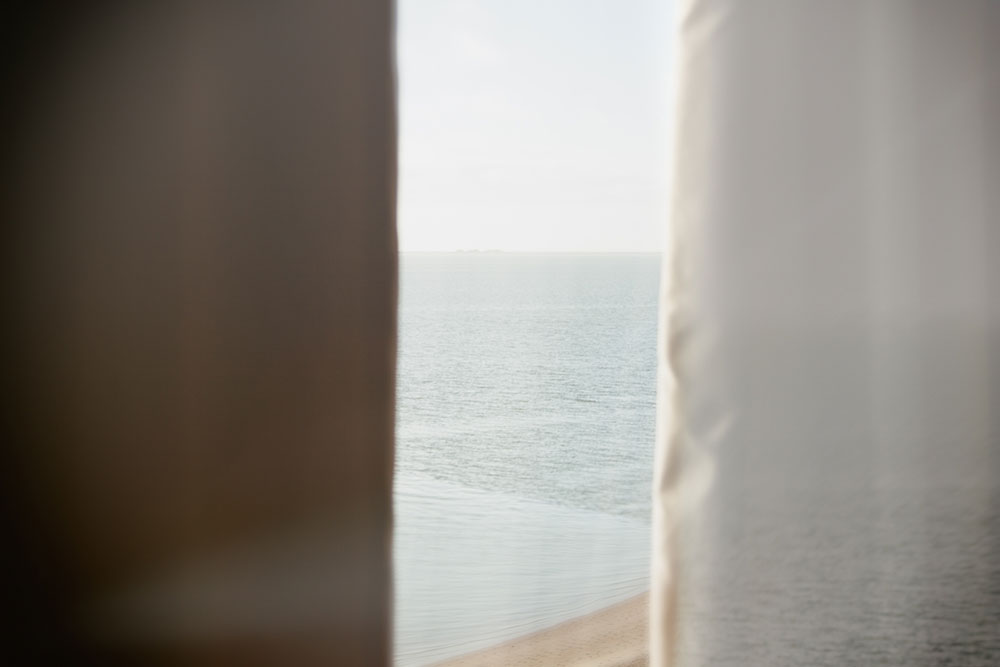
From “Aether”
I encourage readers to delve deeper into the many images on his site, as well as his work on various NFT platforms. (Please refer to the links below the interview at the bottom)
This was a tricky post to write, since there is so much depth to Roman’s work: too much to cover within the scope of a single blog post. I feel like I could write dozens of additional paragraphs, covering the sublime little details hiding in his images, the gentle, intimate portraits, the mysterious locations that crop up frequently, but I have to wrap it up somewhere, and would like to present the interview that I conducted with Roman below.
—
Interview 07/05/2021:
RK: Although there is obvious diversity in your work, and you use multiple formats and cameras, there is a surprising coherence to your aesthetic. How did you arrive at that? Was it always there or did it evolve into your current signature style over time? Or was there a specific moment or event that led to this style?
RD: I’ve been spending quite a lot of time in my archives lately, trying to work with old images while detaching myself from personal memories – and I think there’s something coherent about both my first attempts at photography and my subsequent work to this day. So one has to assume the so-called style was formed relatively quickly and early on. I know for a fact that in photography, I have always been interested in spontaneity and chance. Being a nervous person, I find it quite challenging to work slowly, but I also need total concentration. Now it seems to me that there is something in common and unified between quiet contemplation and fast capture. Perhaps this is what style is all about? I’d like to think that’s it, not the technical aspect, which is usually implied by style.
RK: Your work feels very personal to me, and at times very intimate, but it never crosses the line into uncomfortableness. I never feel like I violate somebody else’s privacy, which can happen sometimes with candid photography. Is this something you are conscious of? How do you judge where that line is drawn in the context of creating art?
RD: I think there’s a fine line between intimacy and exhibitionism, and I hope that if I’m taking photos that are personal, I’m throwing that delicate veil between subject and viewer. It seems to be basic decency. But also a character trait. It’s the same with street photography: in my pictures, the person is most often just a part of the overall subject, a small figure around which the rest is built, and I try not to intrude into someone else’s space. It is probably because I don’t like it when people invade mine, being a reserved (and at the same time open) person by nature.
RK: What is your motivation with your work? What are the key goals and aims that make you pick up the camera and take photos?
RD: It is purely habit! I just can’t stop taking pictures. It is very addictive. There’s no other secret at all, at least for me.
RK: It’s interesting to see somebody with such an established, distinctly analogue portfolio, entering the NFT scene. A series like Auftakt contains the kind of work that normally lives in galleries, not in crypto space. How has the response to your work been so far?
RD: Initially interested in technology, I wanted to give life to these analog works in a digital environment. I like the general ideas of crypto space and decentralization. I like the fact that (ideally) you don’t have to prove anything to galleries and festivals in this environment; in many ways, no one is interested in your achievements. If any artwork of any genre resonates – it is bought. Of course, in reality, this doesn’t always work. The NFT market is too young, there is a huge hype, an extremely noisy space with an absolute mixture of styles, where everyone tries to shout over each other. It can be difficult for photography in its traditional definition to stand out in this market. It doesn’t move, and it’s rarely eye-catching in any way. As for me and my work, so far, it has not seen enormous commercial success, although I am happy that it is attracting a certain amount of attention, finding new collectors and viewers. And I am definitely delighted to meet a tremendous number of artists in such a short period of time. All this is unprecedented, and I am thrilled to be in this crazy time in this crazy environment.
RK: You are originally from Latvia, now living in Germany. I presume it’s a very different environment, at least in some ways. All of us carry the culture and experiences of our formative years with us to some degree, which means that, being an immigrant, you don’t share the same cultural references with the people in your adopted country. Does this inform your photographic practice in any way?
RD: I would not say that the difference in cultures is too drastic, but it is certainly present. In Germany I live a rather isolated life, I have a very narrow social circle, so in my daily life I don’t feel much contradiction, nor much affinity with the local culture. Regarding photography, when I started showing my photographs to local galleries, I often received flattering praise with the remark that it is virtually impossible to sell these works on the local market. That must indicate a great contradiction in cultural references! But I can’t say that it has had any effect on my practice.
RK: “Auftakt”, according to the series description, is a term related to conducting music. There are several lovely portraits of musicians on your website. Do you have a special connection with musicians?
RD: I think that photography and music are two art forms that can withstand a lot of comparisons. Auftakt is a term from the musical dictionary which I think describes the feeling of something yet to come, that I tried to express in this series. And you’re right; the connection to music is indeed vital for me. Since childhood, I have played the piano; I produced electronic music and studied academic composition in my youth. Later I married a concert pianist. I do commercial portraits of musicians, and some of my images are used as album covers.
RK: I mentioned some other photographers that I feel your work has kinship with. Do you see it this way? Do you see your photography as fitting inside a specific tradition or is it a purely personal expression?
RD: I can’t entirely agree with the statement that my photography fits into one tradition or another just because of its technical execution. If my work is compared to famous masters, it could be Michael Ackerman, Anders Petersen, or people you mentioned. I in fact do understand and appreciate their photographic language (especially when it comes to Ackerman). But in my opinion, what all these names have in common is that the photographs are black and white and often explore the limits of film. But there’s nothing else they have in common. So I wouldn’t put myself in the tradition – though that’s probably not for me to decide.
RK: Speaking of other photographers; who do you admire, both contemporary and historic? What are your key influences? Do you draw inspiration from outside of photography?
RD: I will list a few names that come to mind when I think about who inspired me in the beginning and still do. They are not historical, well-known names; most of them are close friends of mine. They are all worth paying attention to, and their work can pierce to the heart: Anna Block, Kir Esadov, Valentina Doneiko, Leonid Tugalev, Igor Trepeshchenok.
As for anything other than photography, it’s easier to answer yes than to do the listing! Of course, it’s different things in different periods. But my favorite art forms that I consume all the time are literature, music, and film.
RK: Finally, is there something you would like to share in conclusion? Some question that you wished people would ask you more, or something else we haven’t covered?
RD: Nothing comes to my mind, but I appreciate the attention to my work and am always open to conversation. Thank you very much, Rudolf!
Thanks Roman, for patiently answering all my questions. I’m looking forward to following your work closely.
—
Social Media Links:
Web: https://www.romandrits.com/
Twitter: https://twitter.com/romandrits
Instagram: https://www.instagram.com/romandrits/
Showtime: https://tryshowtime.com/romandrits
Purchase links:
Hic: https://hic.link/romandrits
Foundation: https://foundation.app/romandrits

Recent Comments